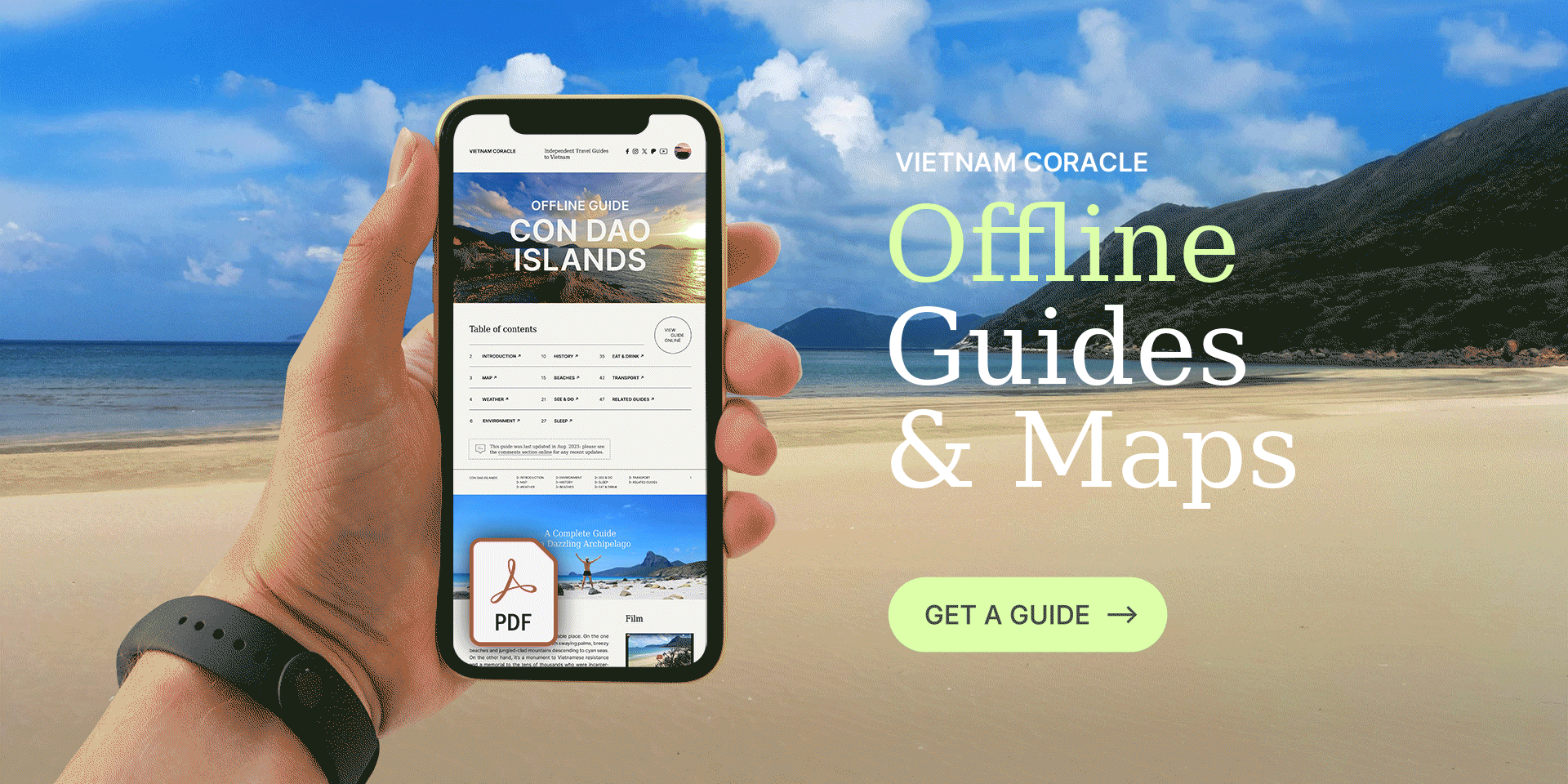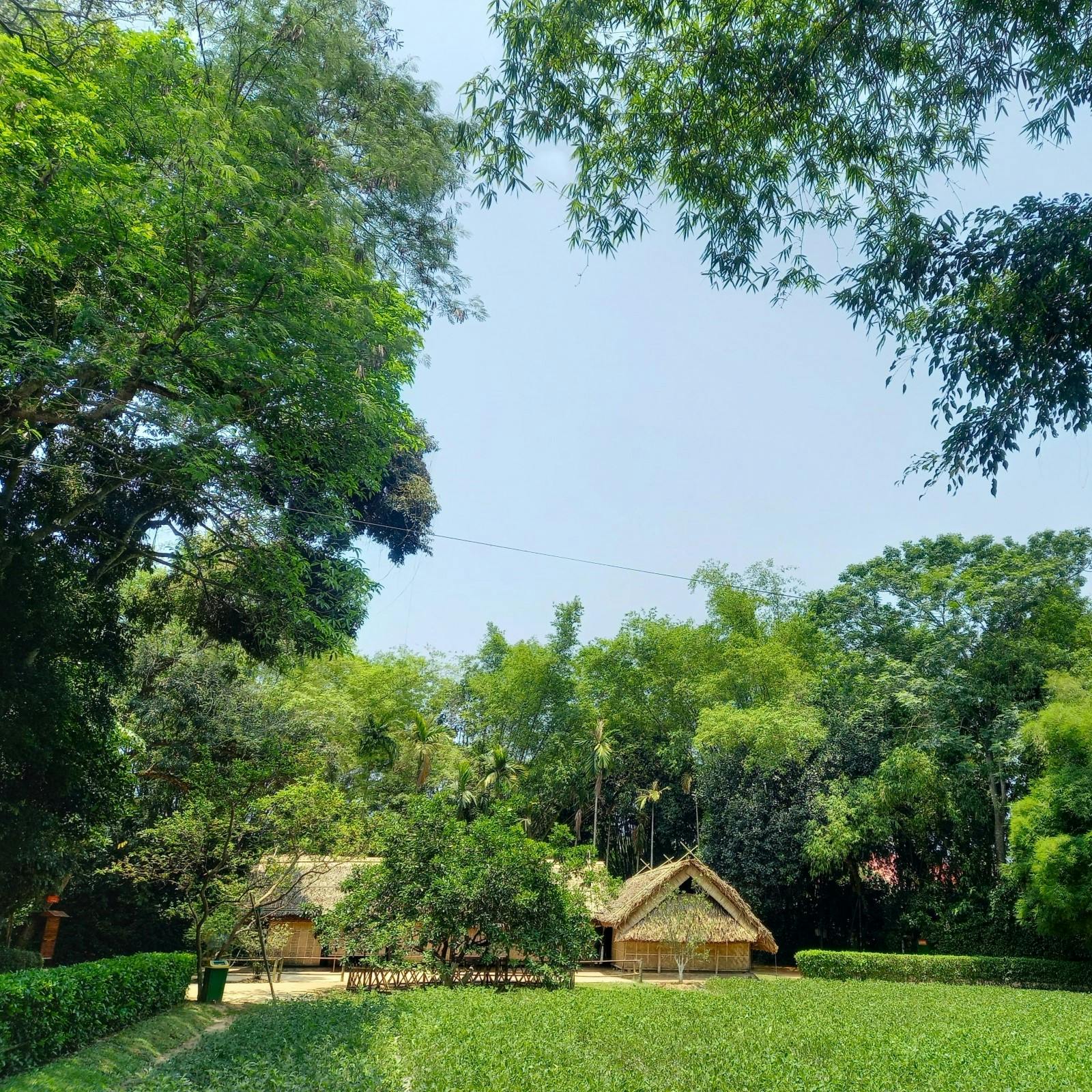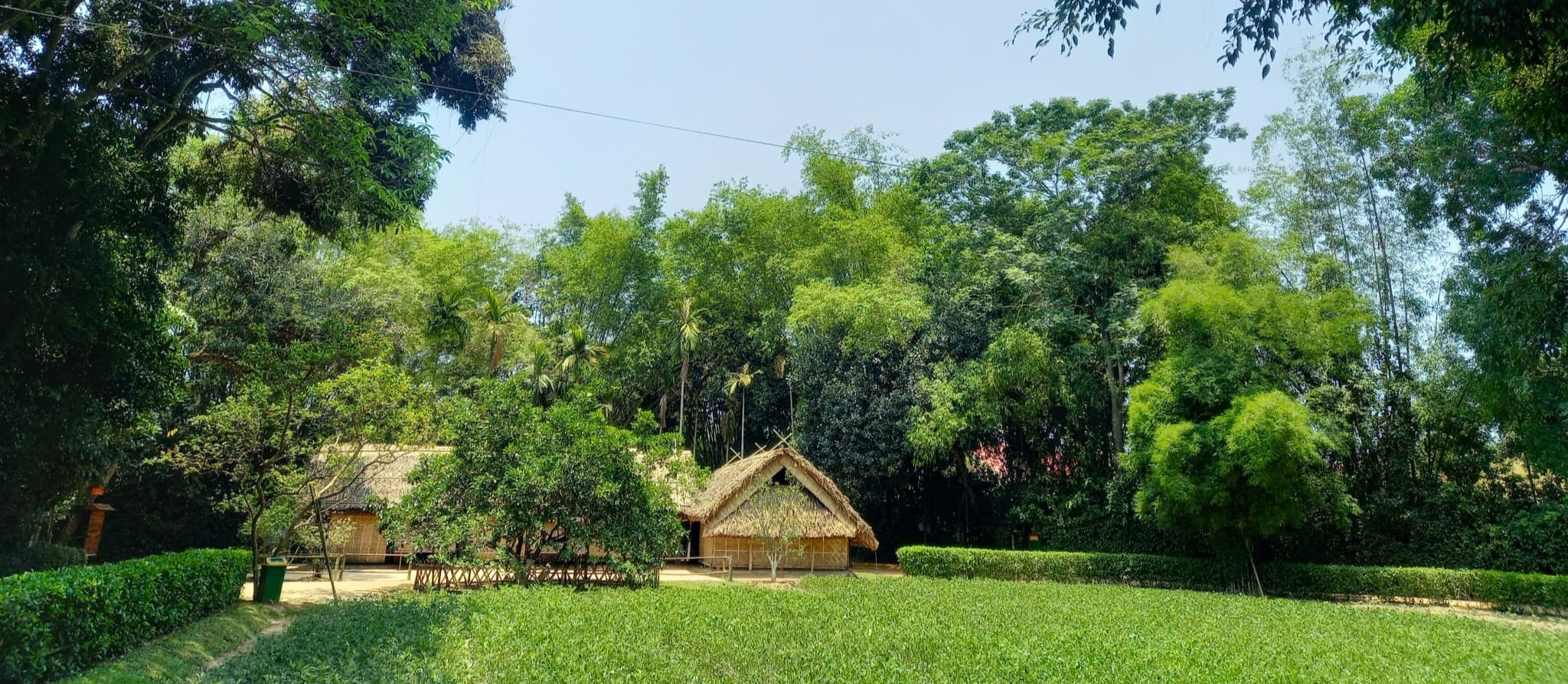First published August 2023 | Words and photos by Vietnam Coracle

Tom Divers is the founder and creator of Vietnam Coracle. He’s lived, travelled and worked in Vietnam since 2005. Born in London, he travelled from an early age, visiting over 40 countries (he first visited Vietnam in 1999). Now, whenever he has the opportunity to make a trip, he rarely looks beyond Vietnam’s borders and his trusty motorbike, Stavros. Read more about Tom on the About Page, Vietnam Times and ASE Podcast.
A cluster of traditional wood-and-thatch hamlets in a rural setting of ponds, gardens and bamboo thickets, Kim Liên is an outdoor museum dedicated to preserving the homeland of Vietnam’s most famous historical figure, Hồ Chí Minh. Born here in 1890, Hồ Chí Minh spent two extended periods of his young, formative years living in the villages of Kim Liên commune. Today, the site is a very pleasant place to visit, even if you only have a passing interest in Hồ Chí Minh and Vietnamese history. Kim Liên is a pilgrimage site for millions of Vietnamese. It’s easy to get to and free to enter.

Please Support Vietnam Coracle
Make a donation or become a patron if you enjoy this website. Vietnam Coracle is totally free & independent. I never receive payment for anything I write.
Thank you, Tom
[Back Top]
KIM LIEN: HO CHI MINH’S HOMELAND
Peaceful Outdoor Museum & Interesting Historical Site
Kim Liên is an attractive and immaculately-kept historical site that’s easy to reach from Vinh or the Ho Chi Minh Road or as part of the Mường Lống Loop. Entrance is free and there’s a good map of the site and lots of information boards. Allow an hour to visit. Although there are cartoonish signs advising visitors on decorum, in reality Kim Liên is a very relaxed site. However, it’s a good idea to bring suitable clothes to cover up if necessary. See below for details:
CONTENTS:
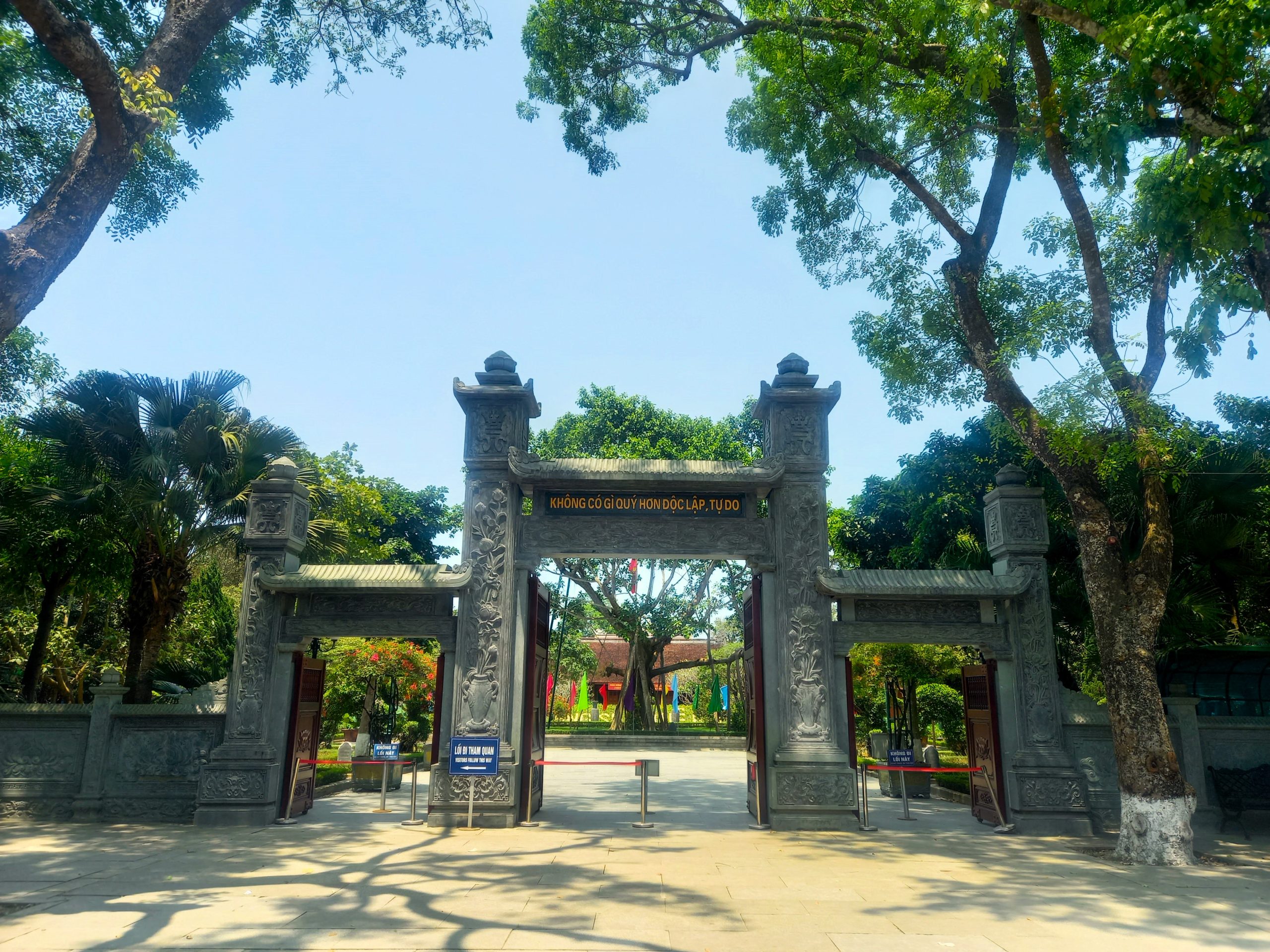
[Back Top]
MAP:
Kim Liên Memorial Site
Kim Liên, Làng Sen Village, Nam Đàn District, Nghệ An Province
*Please Note: Historical information in this article is based only on my limited reading & understanding of various sources & conversations with people: I am not an historian & I cannot vouch for the accuracy of historical details in this article.
KIM LIEN MEMORIAL SITE:
Kim Liên is a rural commune comprising several villages in Nam Đàn District, just 15km west of Vinh, the provincial capital of Nghệ An, in north-central Vietnam. Today, much of the area is dedicated as a kind of outdoor museum to the early years of Hồ Chí Minh, who was born here on 19th May, 1890, to his parents Mr Nguyễn Sinh Sắc and Mrs Hoàng Thị Loan. Not only is this an important historical monument to one of the giants of Vietnamese history, it’s also a very pleasant place to explore on foot, even if you have just a cursory interest in Hồ Chí Minh himself.

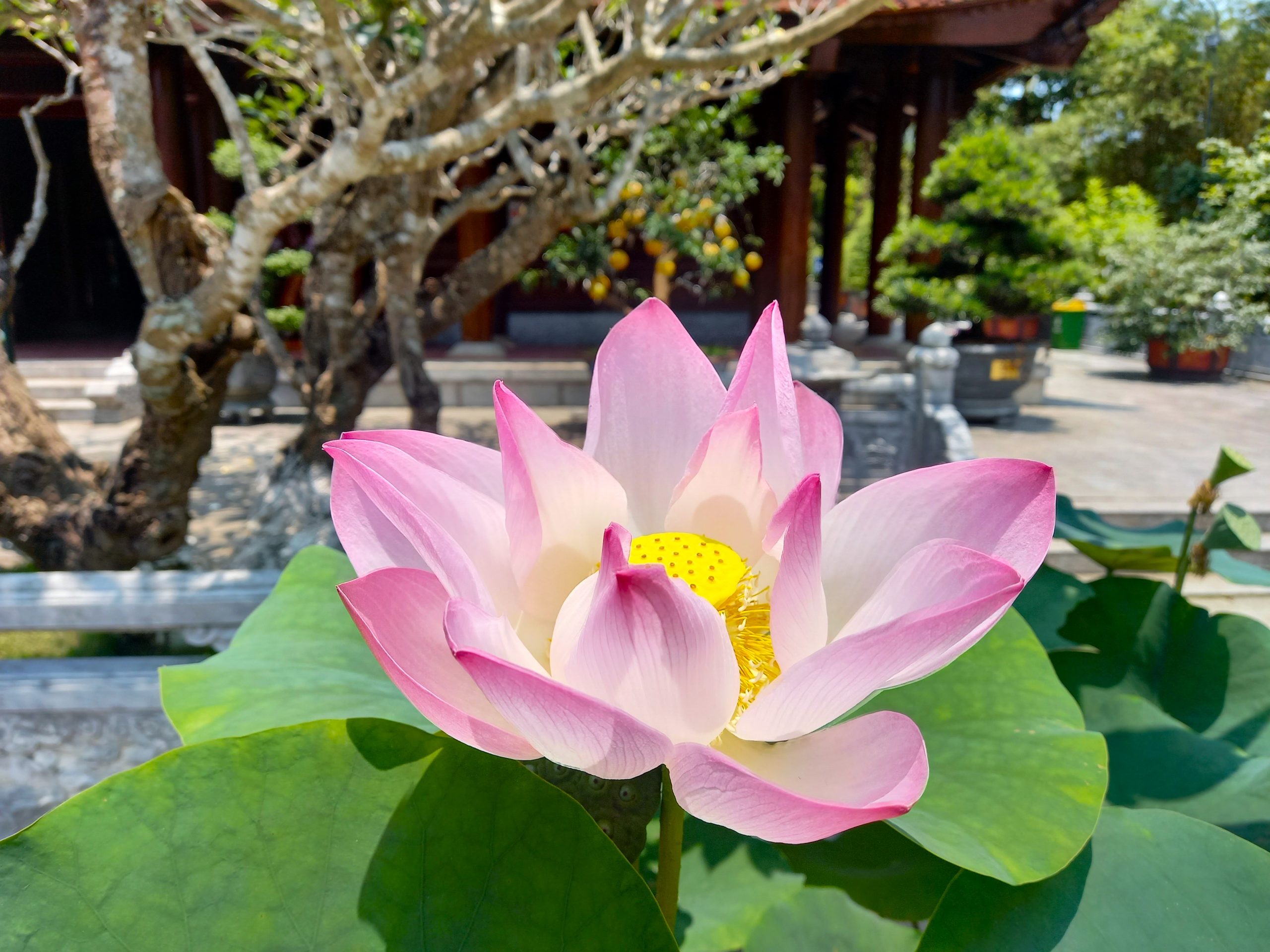
Born in his mother’s village of Hoàng Trù, Hồ spent most of the first 5 years of his life, from 1890-95, in his father’s village of Làng Sen, just 2km away. Hồ’s birth name was Nguyễn Sinh Cung, the first of several names, aliases and epithets he would be known by throughout his long, eventful and nation-shaping lifetime. Back then, Kim Liên was part of Annam, one of the three major regions of French Indochina. In 1895, Hồ left his home to follow his father to Huế, not returning until 1901 when his mother died and his father passed the notoriously difficult imperial examination. As a result, Hồ’s father gained a level of local fame and was gifted a house by the villagers to honour him. Hồ lived in this house from 1901-1906, his formative early teenage years, before leaving, once again, for Huế where he would study at the prestigious Quốc Học (National School) and start on a path of political activism that would shape his life. Hồ left Vietnam by ship in 1911, not to return for 30 years when he re-entered secretly at the northern border and lived in Pác Bó Cave. Although he never lived in Kim Liên again, Hồ revisited several times during his later life as President of Vietnam.
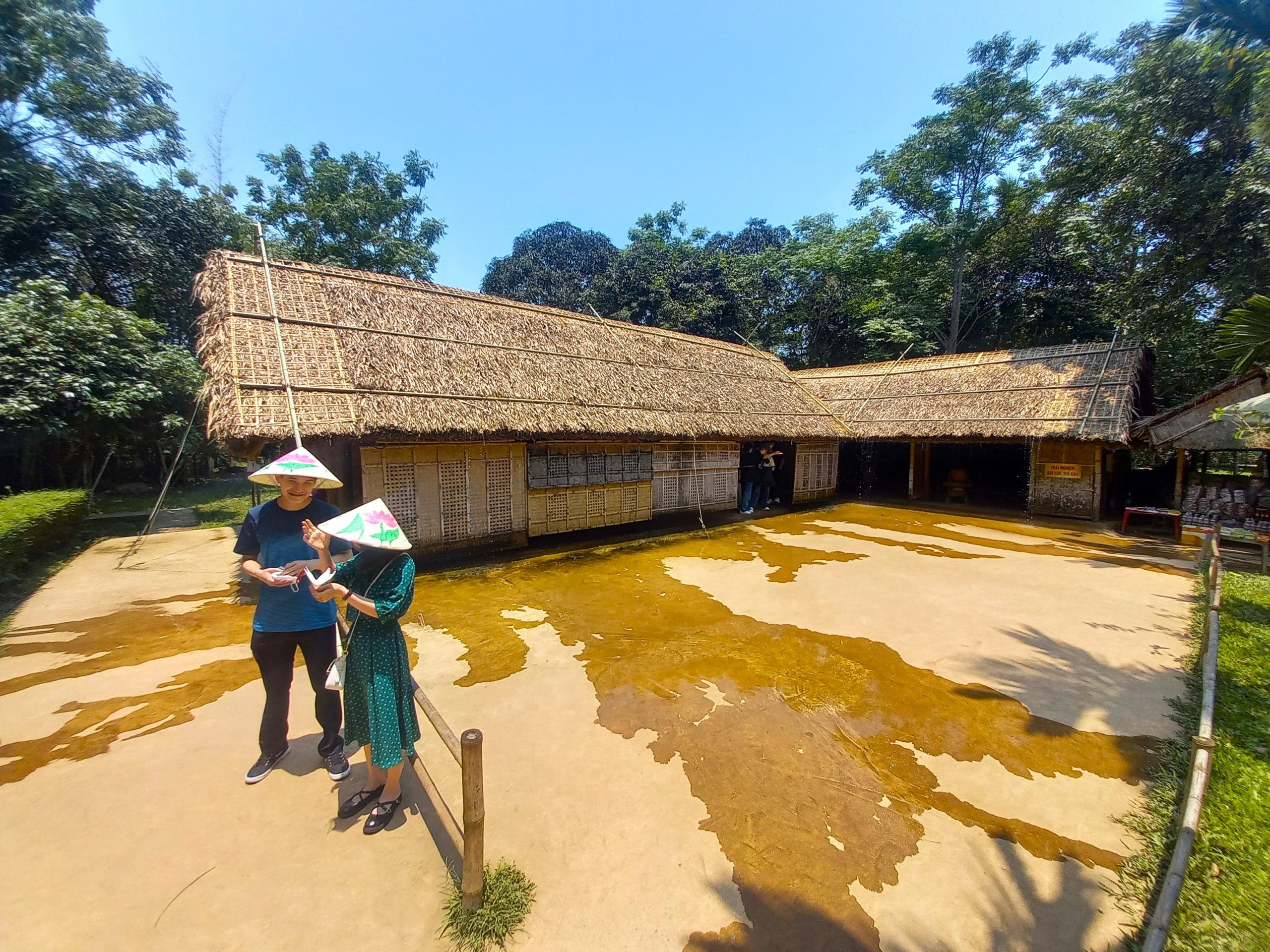

Like other such memorial sites in Vietnam that are associated with Hồ Chí Minh or other heroic national figures of the 20th century, Kim Liên is immaculately kept and considered a sacred site by millions of Vietnamese who come as pilgrims to the homeland of Bác Hồ (Uncle Ho) each year. And yet, in a very Vietnamese way, the site manages to be both reverent and informal. This atmosphere – admirable, in my opinion – will be familiar to anyone who has visited similar sites, such as Pác Bó Cave, General Võ Nguyên Giáp’s tomb, or A1 Hill battle site at Điện Biên Phủ. It is in stark contrast to the formal and sombre mood of reverence and respect at the Hồ Chí Minh Mausoleum in Hanoi. Kim Liên is a beautiful site, and the visitors – the vast majority of whom are Vietnamese – all seem to be in a good mood: jovial and relaxed, rather then pious and reverent. Indeed, there’s almost a party atmosphere beyond the site’s entranceway where groups gather for lunches with plenty of beer and rice liquor. This is a happy high-spirited, celebratory pilgrimage stie.
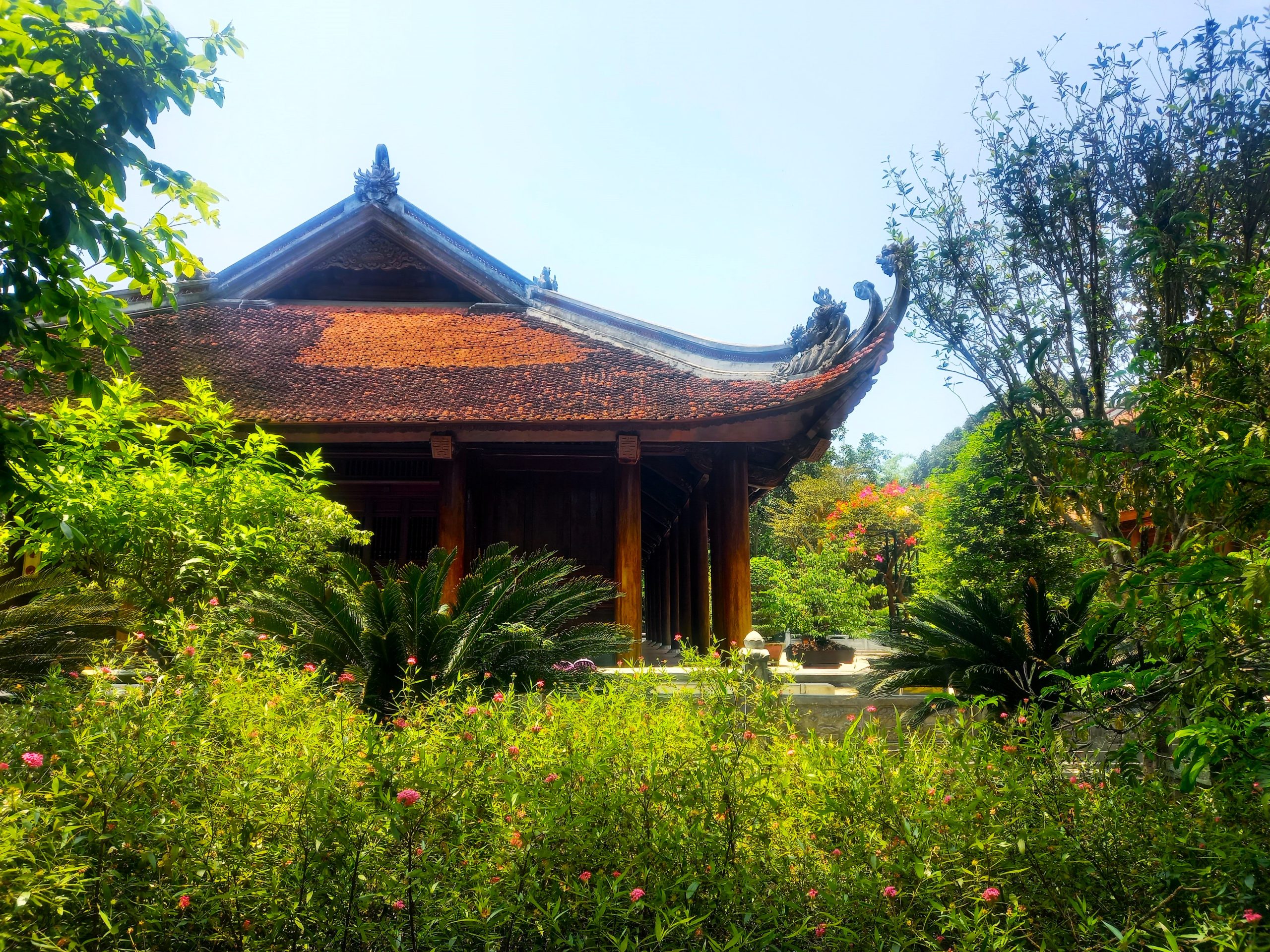
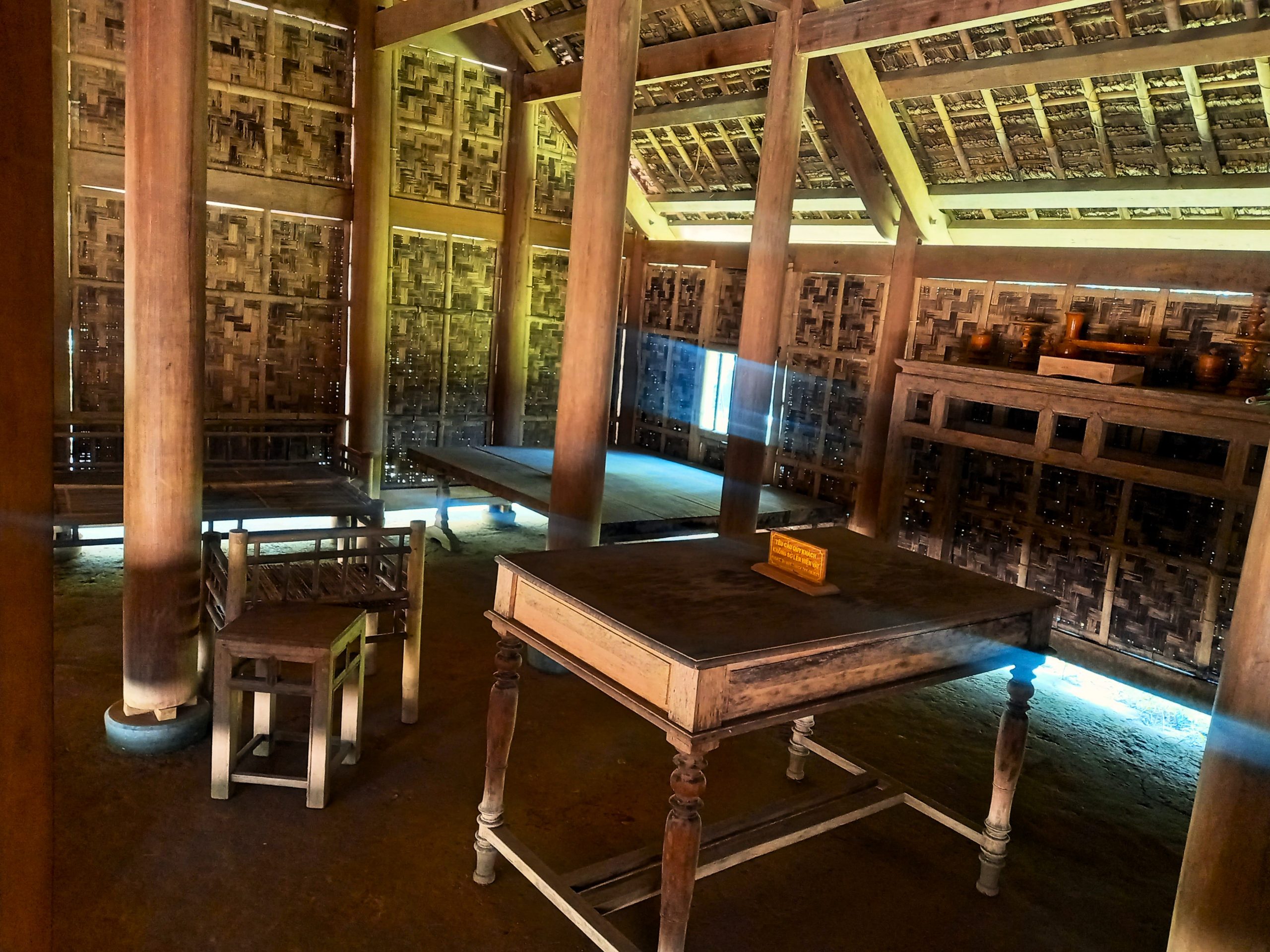
Kim Liên memorial site is free. The entranceway is behind the carpark at the south side of the complex. A pathway leads visitors on a clockwise loop around the site. Above the entrance arch reads Hồ’s most famous quote: “Không có gì qúy hơn độc lập tự do” (Nothing is more precious than independence and freedom), a statement that drove and defined his life. The site includes shimmering ponds full of lotus flowers and lilies, beautiful gardens of tropical fruit trees, bamboo hedges surrounding small crop fields, a freshwater village well, an ancient banyan tree, a temple complex for the worship of Hồ and his family, a lake full of golden carp, and several clusters of traditional wood-and-thatch homes. The most photographed and significant of these is Nhà Ông Phó Bảng – the house gifted to Hồ’s father, Nguyễn Sinh Sắc, by the village in 1901 when he passed the imperial exam, and where Hồ lived until 1906. There are signposts and information displays in Vietnamese and English.
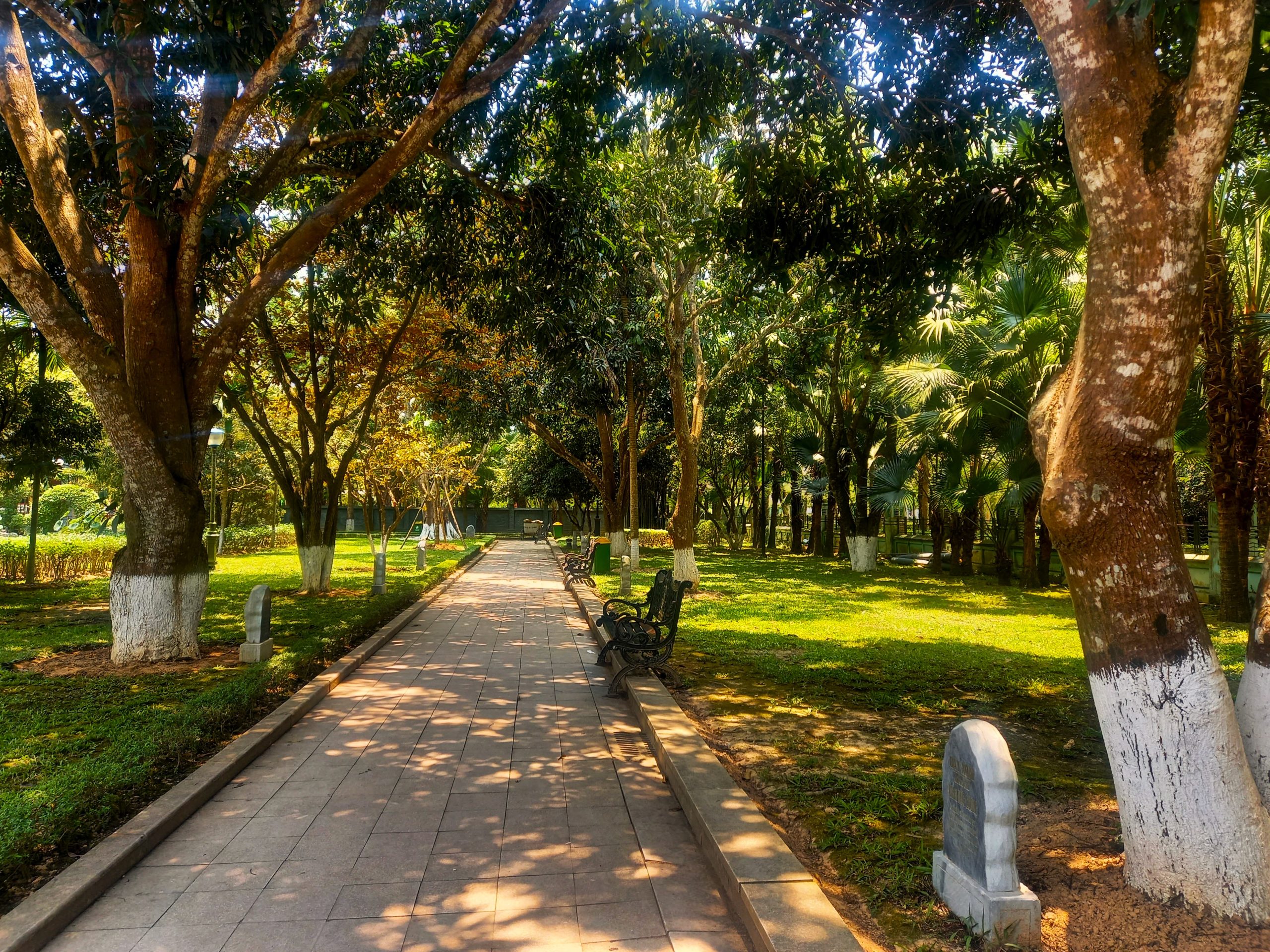
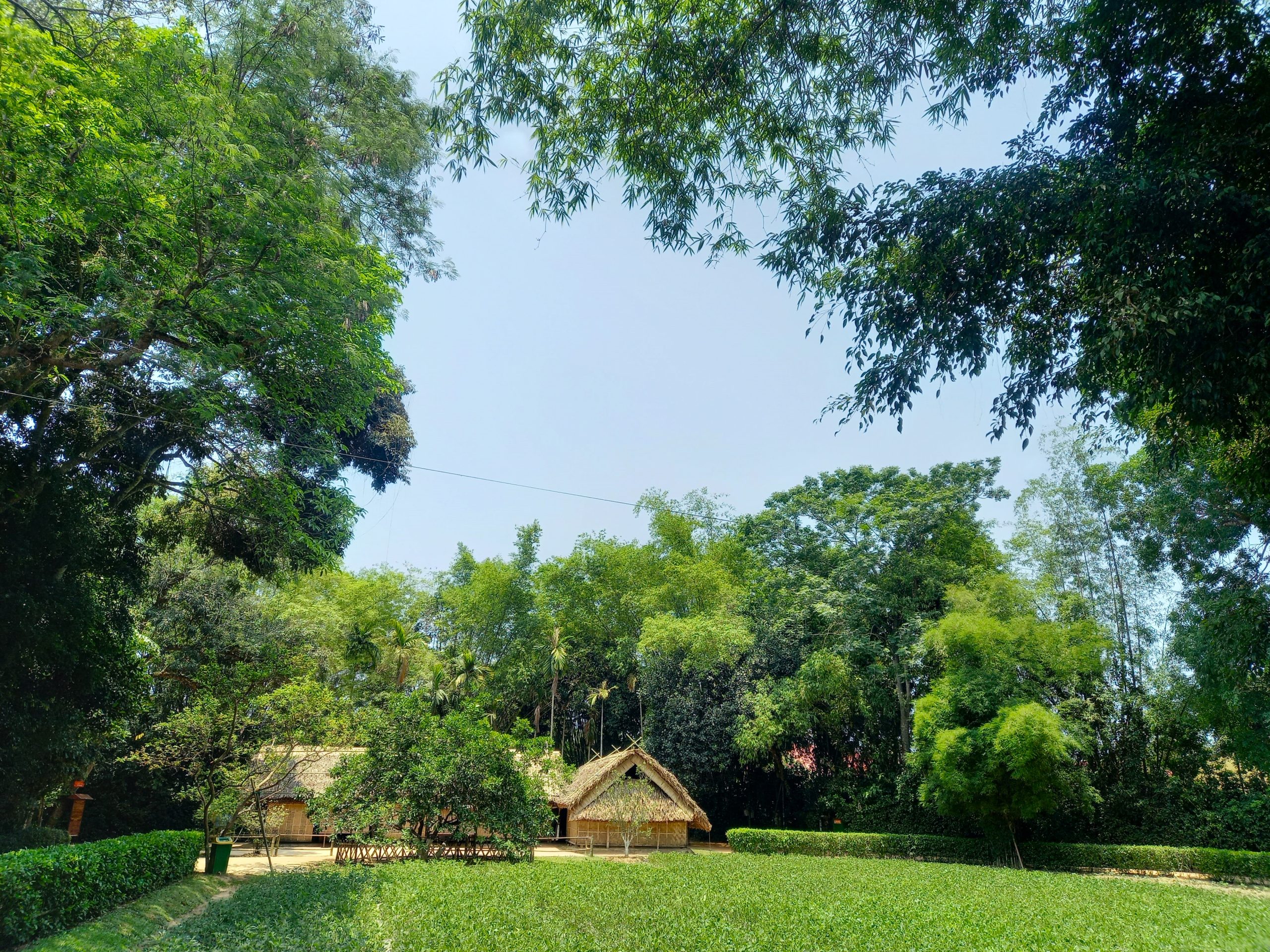
It’s a pleasant place to wander around contemplating the beginnings of an extraordinary life. It all started here: Hồ’s lifetime of travel, political activism, resistance, and the long, long struggle to realize an independent Vietnam until his death in 1969, aged 79, just six years before the defeat of South Vietnam on 30th April, 1975 and the official reunification of an independent Vietnam in 1976.
In fact, in these lush surroundings on a warm, bright and sunny spring day in the benevolent embrace of rural Vietnam, one can’t help but think, ‘Why on earth would Hồ, growing up in such a setting, ever want to leave, let alone devote his life to the political, social and military struggle for national independence? Why not stay here, living happily in a thatched home beneath a thicket of bamboo in the dappled sunlight of Annam?’ I’m being facetious, but this does illustrate what a pleasant place Kim Liên is. In 1959, Hồ had apparently expressed his opposition to the creation of a memorial site here, saying that the funds should be put to use for more important matters. Around the entrance, there are gift shops selling tacky Hồ-related memorabilia as well as portraits of other left-wing leaders, such as Marx, Lenin and Engels. Just 2km southeast of Kim Liên is Đền Chung Sơn, a large temple dedicated to Hồ and his family on a pine-studded hill.

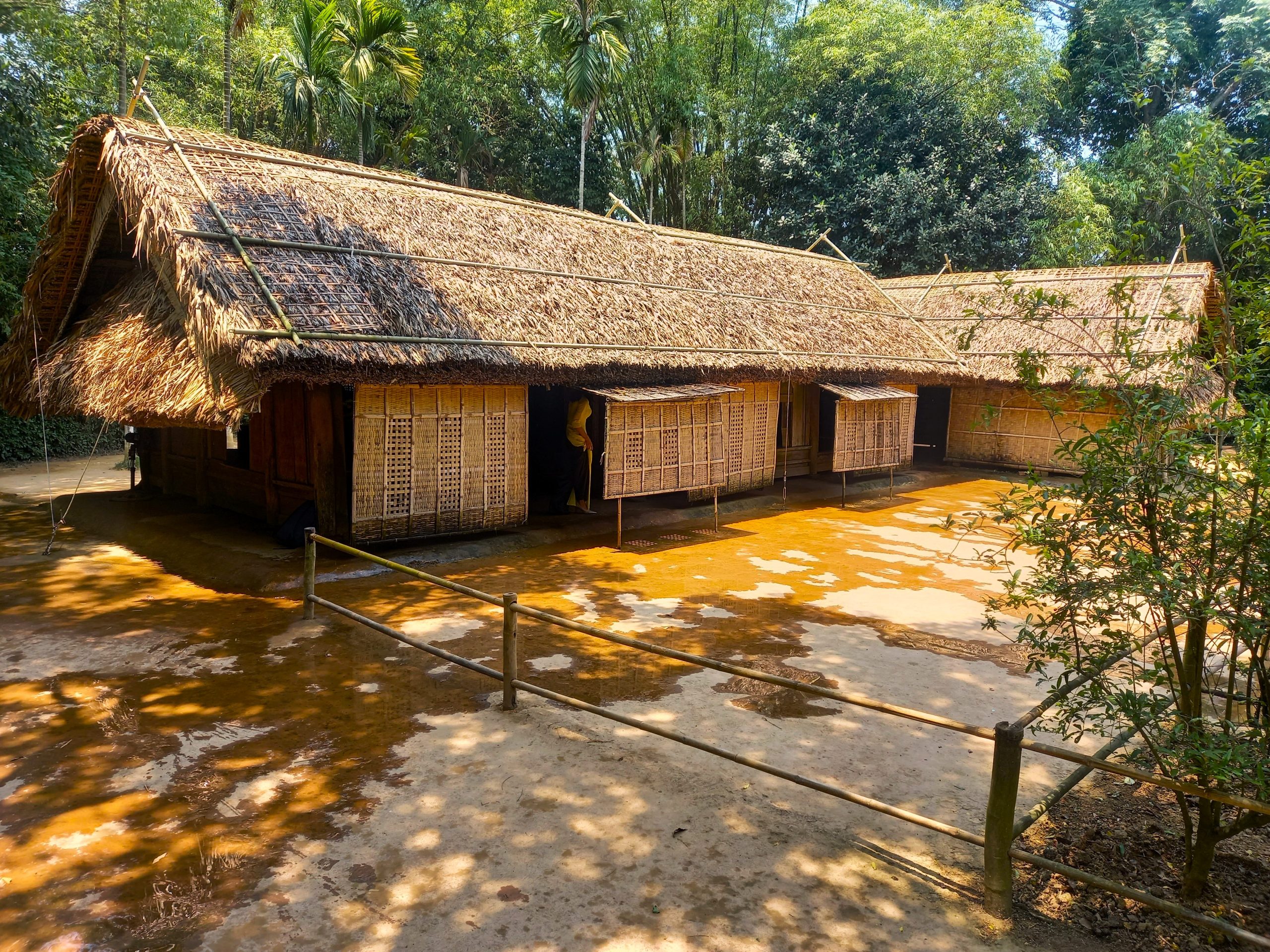
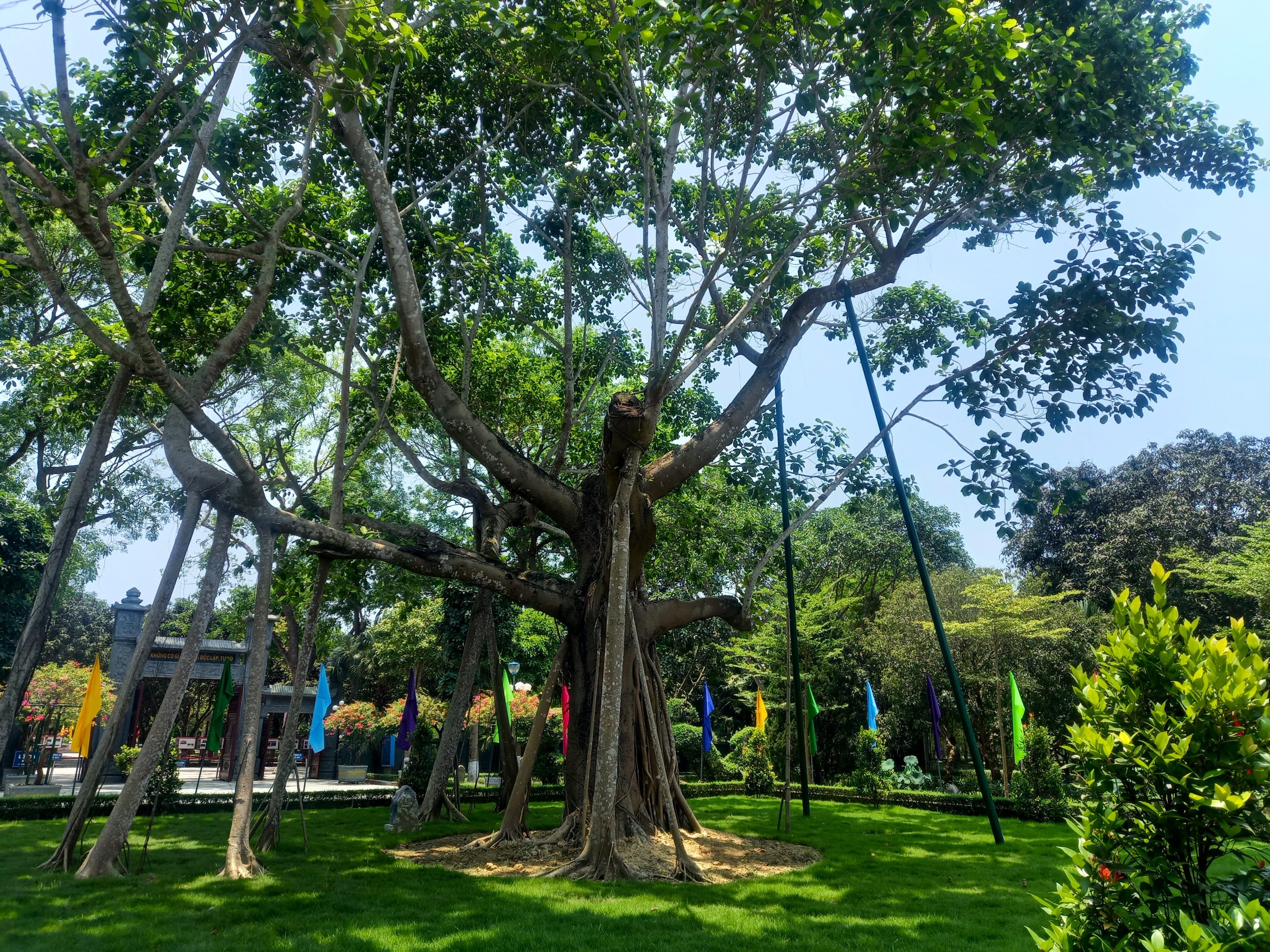
FOOD & DRINK:
There are rice eateries (quán cơm) surrounding the perimeter of Kim Liên memorial site, especially opposite the entrance and carpark. Rice lunches are very good and prices are reasonable. Perhaps the best way to choose where to eat is by how busy they are with Vietnamese diners. Lunch is generally between 11am-1pm. There are also lots of drinks and ice cream kiosks as well as noodle houses, some serving good bún chả (pork noodles).


WHERE TO STAY:
It’s not really necessary to overnight at Kim Liên, but if you need a place to stay, there are several local mini-hotels and guesthouses (nhà nghỉ) in the area. Alternatively, stay at one of the many budget and mid-range hotels in Vinh, just a 20-munute drive east of Kim Liên. (See this page for accommodation options in Vinh.)
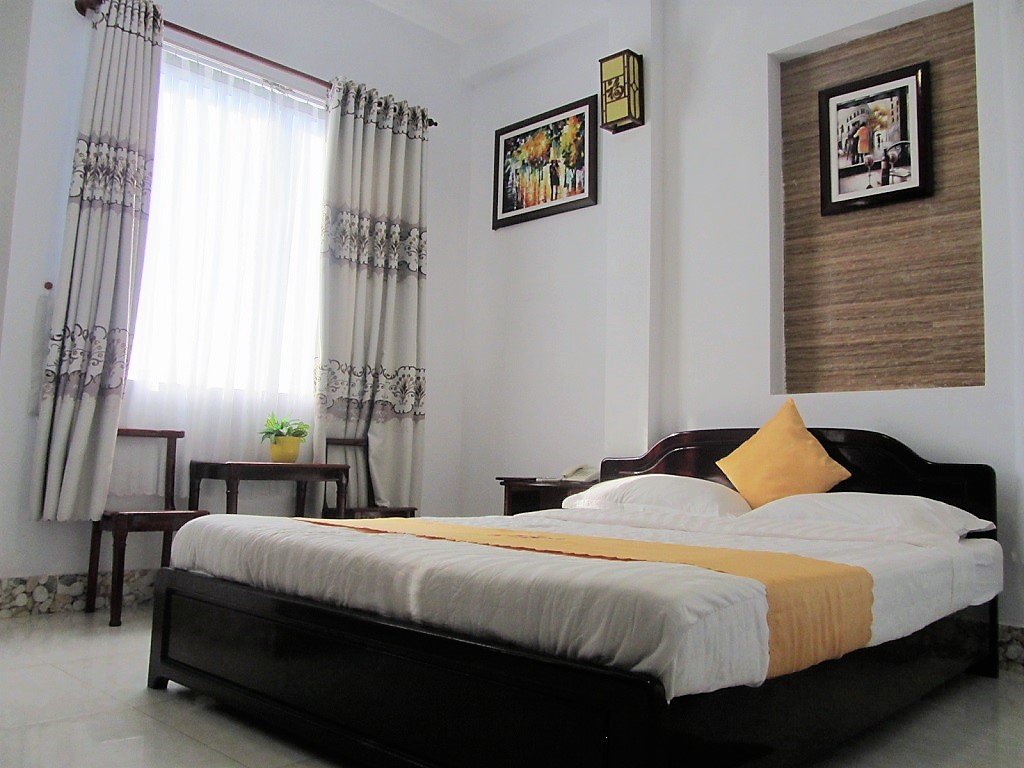

HOW TO GET THERE:
Kim Liên is ideal as a brief stop on a larger itinerary of the wider region. In particular, Kim Liên is a convenient stop on the Mường Lống Loop or a slight detour from the Ho Chi Minh Road or an easy side trip from Vinh. Kim Liên is just 15km west of Vinh, 30km east of the Ho Chi Minh Road and one of the first stops on the Mường Lống Loop. Vinh can be reached by plane, train or bus from most major Vietnamese cities. (Check flights, trains and buses to Vinh on this page.)
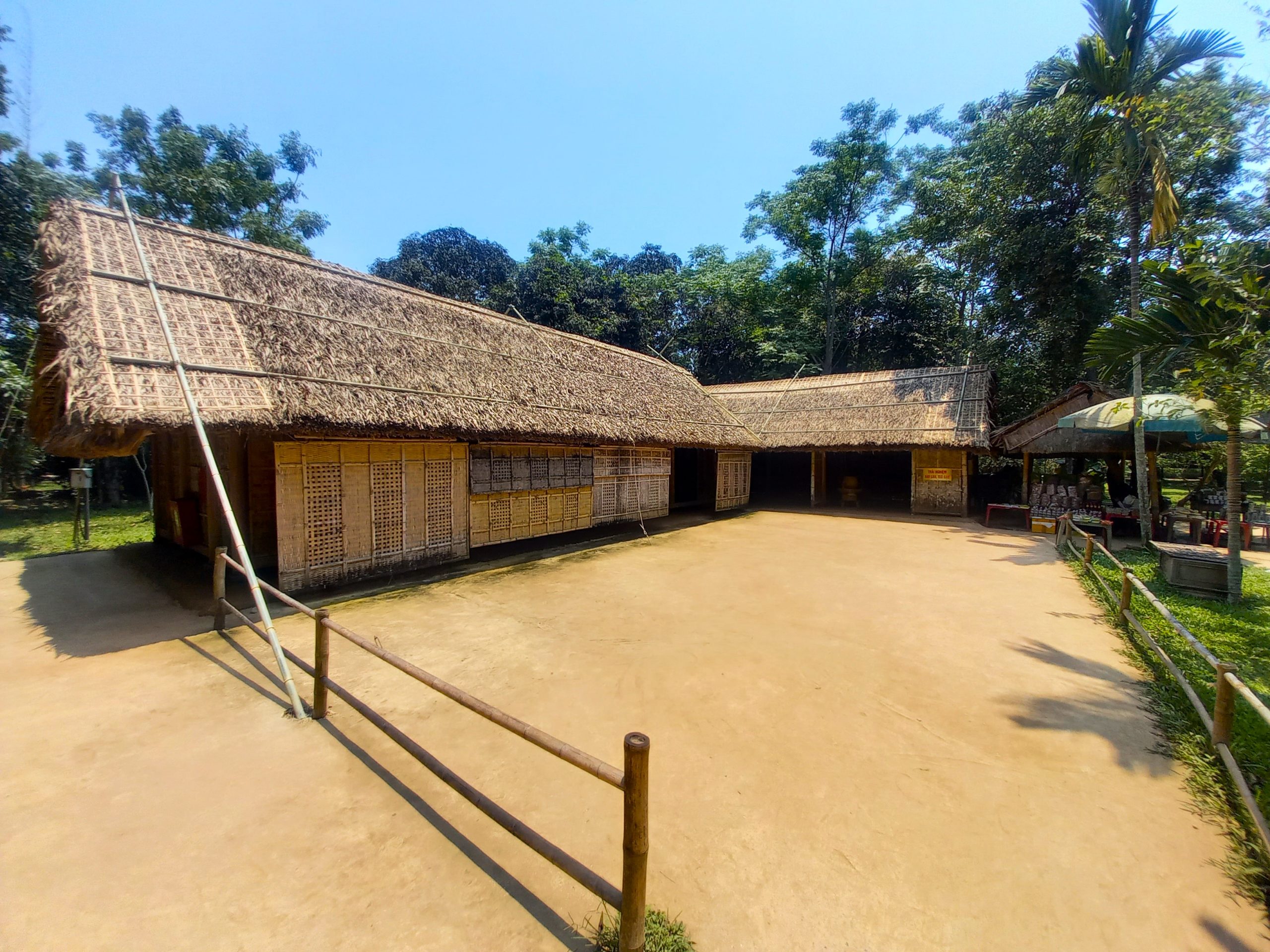
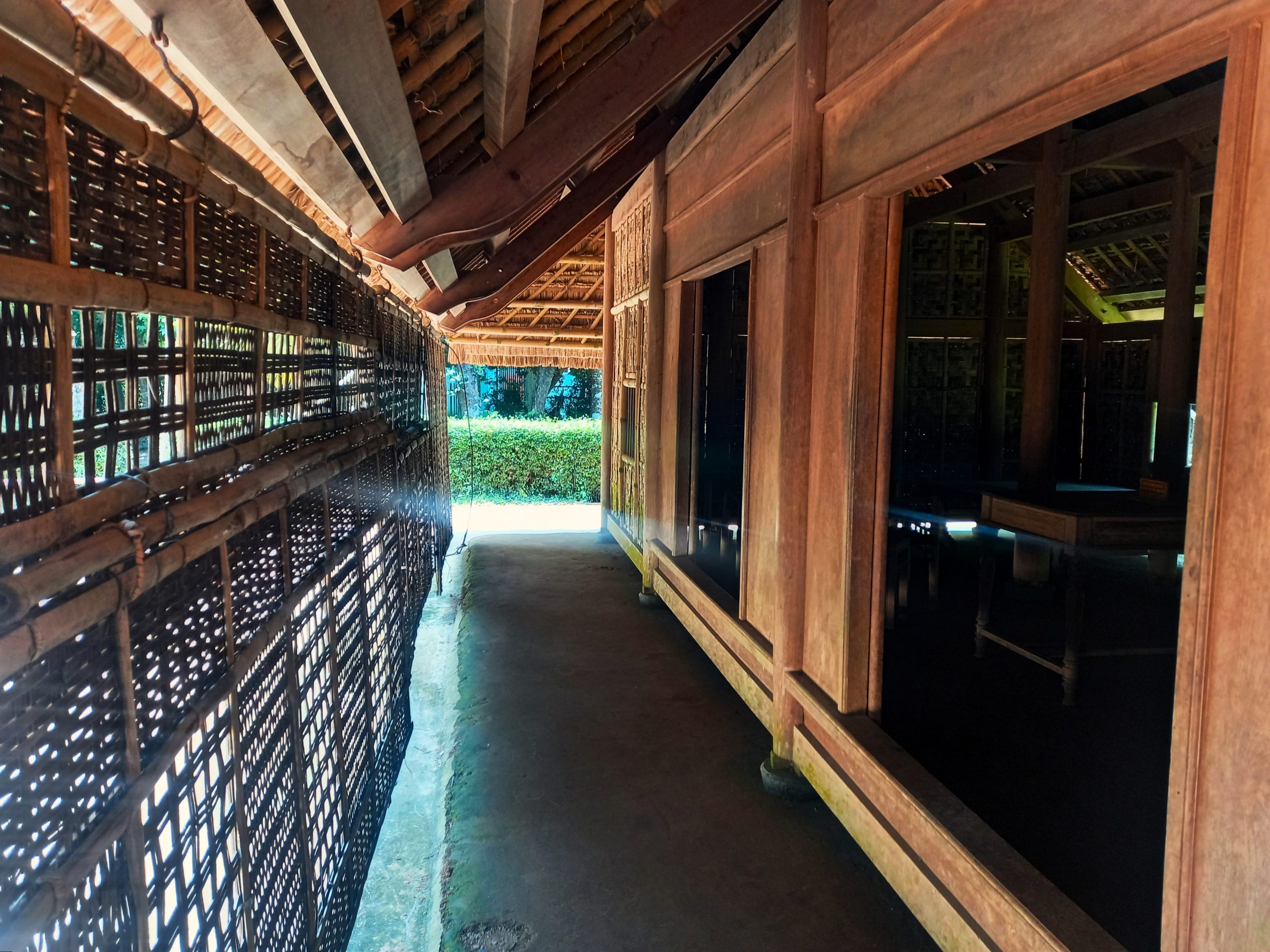
*Disclosure: I never receive payment for anything I write: my content is always free and independent. I’ve written this guide because I want to: I like Kim Liên and I want my readers to know about it. For more details, see my Disclosure & Disclaimer statements and my About Page
